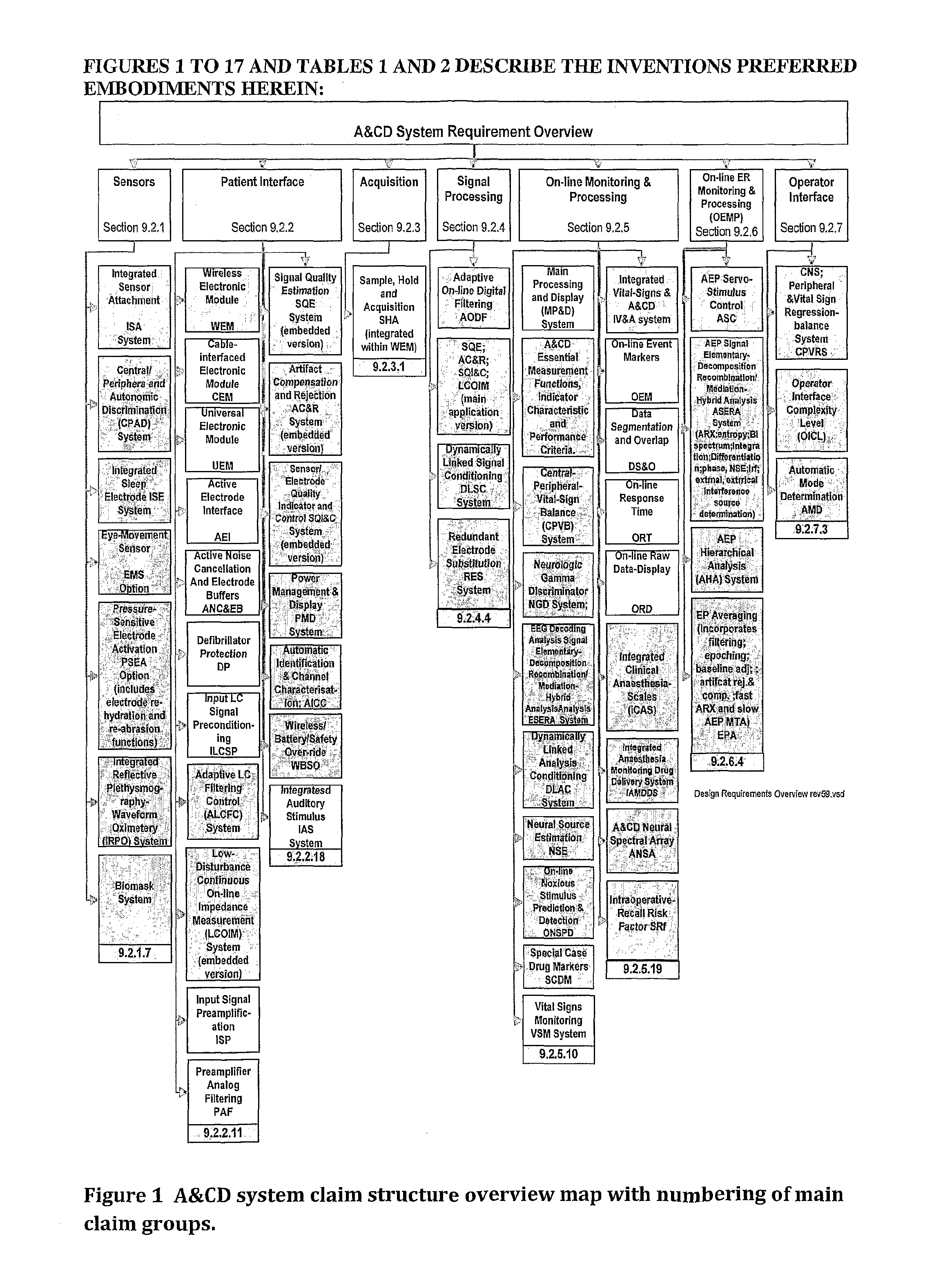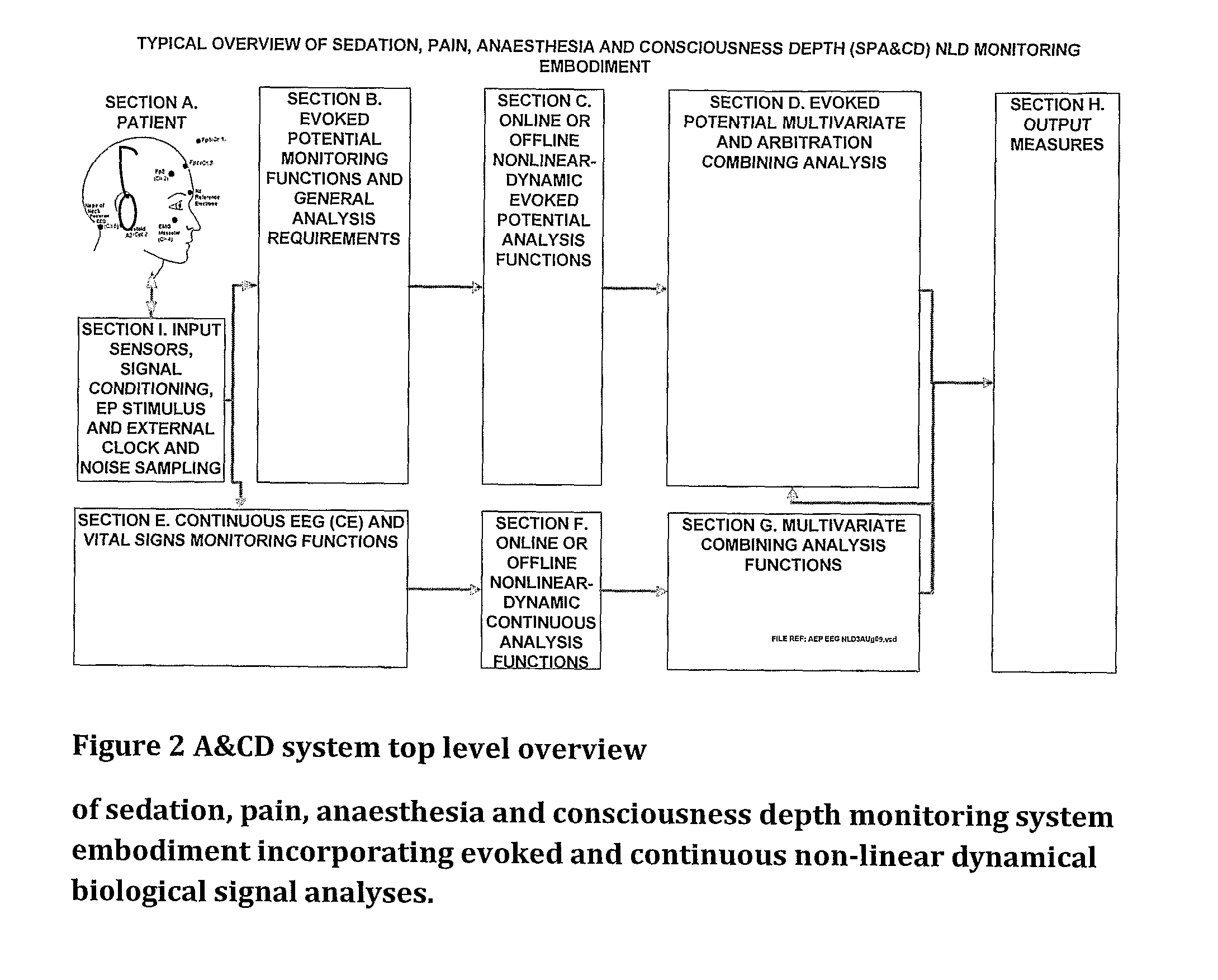Anaesthesia and consciousness depth monitoring system
a depth monitoring and anaesthesia technology, applied in the field of evoked electrophysiological potential signal monitoring, can solve the problems of severe signal disturbances during critical, inability to discriminate between crucial short-term versus long-term memory functions implicated in intraoperative recall, and inadvertent combining of distinctively different signal groups, so as to minimize unwanted external signal interference
- Summary
- Abstract
- Description
- Claims
- Application Information
AI Technical Summary
Benefits of technology
Problems solved by technology
Method used
Image
Examples
Embodiment Construction
[0113]FIG. 1:
[0114]FIG. 1 decomposes the system into seven subsystems, each subsystem further decomposed into a number of components. Each of these subsystems and the affiliated components will be described in the form of systems requirements. Green blocks represent systems inventions.
[0115]FIG. 2:
[0116]FIG. 2 presents a high level overview of a typical A&CD system embodiment. Section A shows the patient monitored signals via the patient-applied sensor or the so called integrated sensor attachment device, which is typically applied to the patients forehead and facial regions. A stimulus signal is generated and applied to the patient in order to evoked the desired patient-responses fro further processing. The patient sensor-monitored signals are signal conditioned then input to section E where the evoked potential monitoring functions are applied to the evoked signals, and to section E where the continuously monitored signals are further processed. Section C applies special non-linea...
PUM
 Login to View More
Login to View More Abstract
Description
Claims
Application Information
 Login to View More
Login to View More - R&D
- Intellectual Property
- Life Sciences
- Materials
- Tech Scout
- Unparalleled Data Quality
- Higher Quality Content
- 60% Fewer Hallucinations
Browse by: Latest US Patents, China's latest patents, Technical Efficacy Thesaurus, Application Domain, Technology Topic, Popular Technical Reports.
© 2025 PatSnap. All rights reserved.Legal|Privacy policy|Modern Slavery Act Transparency Statement|Sitemap|About US| Contact US: help@patsnap.com



